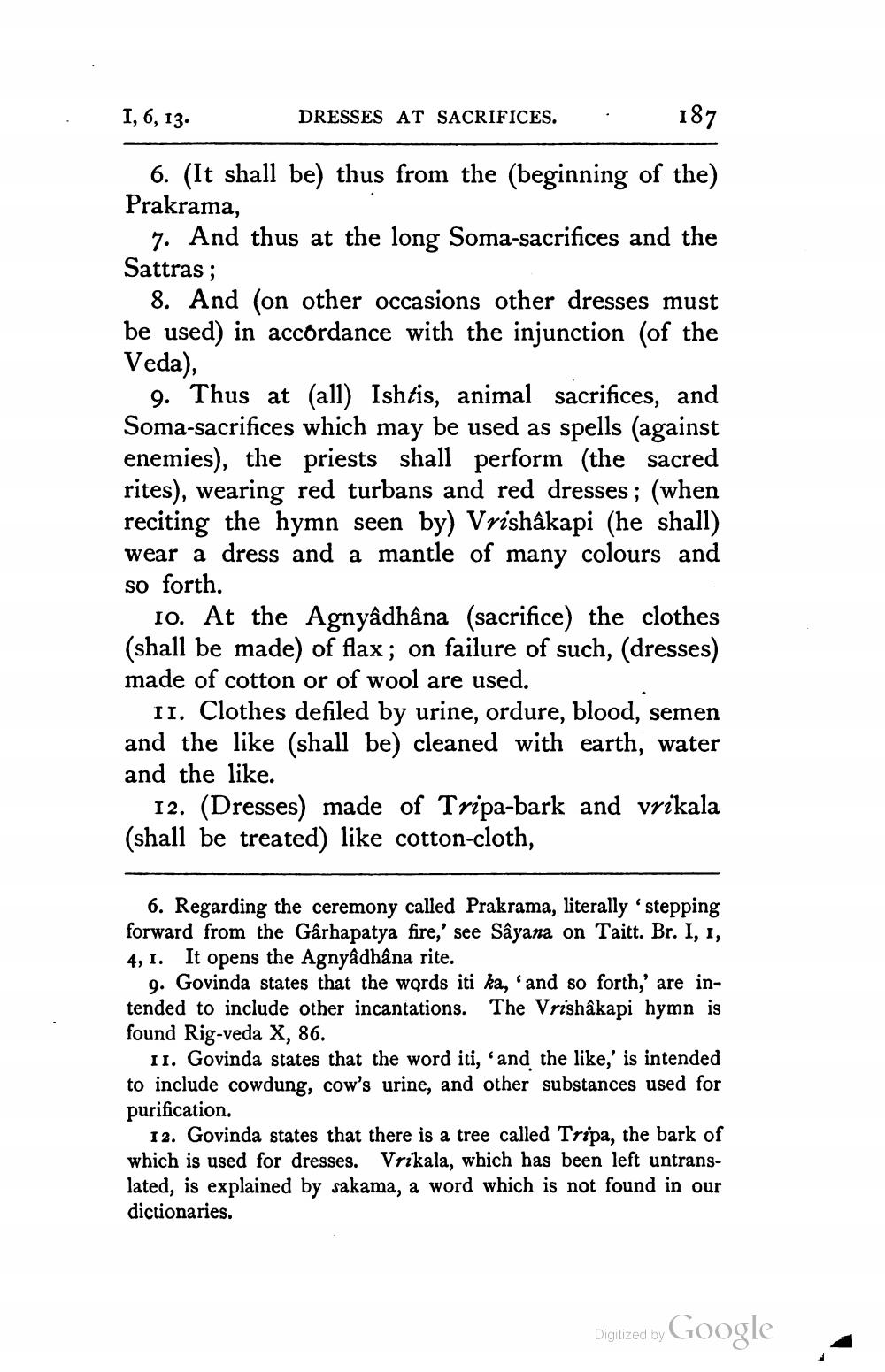________________
1, 6, 13. DRESSES AT SACRIFICES.
187 6. (It shall be) thus from the beginning of the) Prakrama,
7. And thus at the long Soma-sacrifices and the Sattras;
8. And (on other occasions other dresses must be used) in accordance with the injunction (of the Veda),
9. Thus at (all) Ishtis, animal sacrifices, and Soma-sacrifices which may be used as spells (against enemies), the priests shall perform (the sacred rites), wearing red turbans and red dresses ; (when reciting the hymn seen by) Vrishâkapi (he shall) wear a dress and a mantle of many colours and so forth.
10. At the Agnyâdhana (sacrifice) the clothes (shall be made) of flax; on failure of such, (dresses) made of cotton or of wool are used.
II. Clothes defiled by urine, ordure, blood, semen and the like (shall be) cleaned with earth, water and the like.
12. (Dresses) made of Tripa-bark and vrikala (shall be treated) like cotton-cloth,
6. Regarding the ceremony called Prakrama, literally 'stepping forward from the Garhapatya fire,' see Sâyana on Taitt. Br. I, I, 4,1. It opens the Agnyâdhầna rite.
9. Govinda states that the words iti ka, and so forth,' are intended to include other incantations. The Vrishâkapi hymn is found Rig-veda X, 86.
11. Govinda states that the word iti, "and the like,' is intended to include cowdung, cow's urine, and other substances used for purification.
12. Govinda states that there is a tree called Tripa, the bark of which is used for dresses. Vrikala, which has been left untranslated, is explained by sakama, a word which is not found in our dictionaries.
Digitized by
Digitized by Google
+




